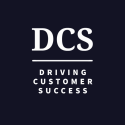3 Customer Success Trends You Don’t Want to Miss Out in 2022

Companies have always tried to enable their customers to be successful, but the definition of success has changed. The reason is that customers now have greater choice as everything moves to the cloud and subscription models.
B2B companies have good intentions, but most are repeating the same mistakes: releasing shiny new features for their products and developing more learning content and marketing funnels around these features — all while trying to guess what their customers are trying to accomplish. Most companies are data-rich and insights-poor.
It takes more than features, code, and content to help customers achieve successful outcomes. Customers won’t use the vast majority of features, no matter how many informative blog posts or videos you create. Customers care about outcomes, and they want to work with companies that deliver them seamlessly. Each individual feature is just one small part of creating a successful business outcome.
There is also an outcome gap, a disconnect between product outcomes (usage, customer retention, NPS) and business outcomes (what the customer ultimately wants to achieve). As Paul Henderson wrote in his book The Outcome Generation, “Customers buy technology products and services to achieve an end outcome. That end outcome isn’t successful use of the product. Successful use of the product is a means to a bigger end outcome.”
According to research from Deloitte, companies that create an exceptional customer experience and enable customers to realize their desired outcomes have higher retention and growth rates. Yet most companies are still falling short in this area. A 2021 Deloitte study found that 88% of chief customer officers (CCOs) in tech strongly agreed that focusing on customer outcomes is the next business model evolution — but only 15% said they were equipped to successfully execute this strategy.
I believe that the only way to achieve an outcome-driven business model is to put experts from your ecosystem into the operating system of your company. This means moving from a world where you broadcast to customers about your features to one where you listen to customers to understand what business objectives they are trying to achieve.
Here are three trends in the market to learn from as you shift your focus to customer outcomes.
1. Successful companies are starting with customer needs and working backward.
Leading outcome-driven companies are creating full-service experiences for their customers. Intuit placed real CPAs in TurboTax Live to offer customers on-demand tax advice. Amazon launched Amazon Flex, enlisting independent drivers to pick up and deliver same-day packages to customers. Qualtrics surpassed legacy provider SurveyMonkey in revenue, in large part by building a full-stack experience for customers, offering extensive professional services that account for nearly one-third of its revenue.
These companies started with what their customers needed and made sure that they had the right mix of technology and experts to deliver successful business outcomes. They were dedicated to the “last mile,” adding expert intelligence to fill in the gaps where features were necessary but not sufficient and ensuring successful outcomes. Amazon in particular is famous for working backward from the customer, deploying business models that can deliver successful outcomes. This approach is built into the company’s DNA, and it shows up in everything from Amazon Flex to AWS IQ.
2. Listening, not broadcasting, delivers outcomes.
Humans with specific skills and knowledge are essential to achieving customer outcomes, and expert intelligence must be part of your company’s operating system. Every company represents a domain, and every domain has certain known outcomes. For each of these outcomes, there are experts around the world who know how to deliver them for customers.
Successful companies are focused on the entire customer experience and business outcomes. They are truly listening, not simply broadcasting their latest features to our email boxes with a training video. Customers may need to use 20 features to reach their objective, but it shouldn’t be their responsibility to search for videos, articles, and other resources to discover best practices. In the future, successful companies won’t continue to spend millions of dollars throwing more content, code, and certifications at people who don’t have time or energy to learn about every feature. They’ll start by asking one question: “How can we help you be successful?” and listening to the answer. They’ll take the load off their customers and connect them with experts who already know the best practices to accomplish their goals.
3. Personalized experiences need expert intelligence (no one wants to build another Clippy).
Companies want to invest in creating personalized experiences for customers. Personalization is tied to positive business outcomes, including increased brand loyalty, profitability, and customer engagement. It can also reduce marketing and sales costs by 10% to 20% while increasing total sales. But most companies have no idea how to go about it. In many cases, they have feature-based telemetry and click data on learning content, but they don’t have the right data on customer insights, such as what business outcome they are trying to achieve. Customer success data is also often trapped in multiple tools across departments, not structured in a way to feed an intelligent system or scale easily.
Companies may pour money into new technologies, like artificial intelligence, machine learning, and natural language processing, but that is only half of the solution. Listening to customers and working backward from their desired outcomes is the only way for companies to create real personalization. If they don’t have relevant structured outcome data and expert intelligence, they run the risk of providing a negative customer experience when trying to drive personalization (see: Clippy).
Intuit’s AI-powered virtual expert platform behind TurboTax Live and QuickBooks Live is a perfect example of this collaboration. Customers can receive digital assistance for many problems, but when they want to talk to a human, the platform analyzes hundreds of attributes to match them with an expert tailored to their specific needs. This data is also being used to tune the product via industry-leading insights and improved algorithms. This is a great example of expert intelligence. Technology alone wouldn’t be enough to drive successful outcomes: experts create the intelligence in the product. And Intuit is reaping the benefits: its user base has increased 70% in the past year, and customer service wait times have dropped by 15%.
Now is the time for you to think carefully about the future of your company. Who do you want to be? Where do you want to go? You can keep betting on features, hoping they will finally pan out. Or you can infuse your company with expert intelligence and start helping your customers achieve their business outcomes.
– Paul Estes

Hakan Ozturk
Founder, theCScafe.com, #1 Weekly Customer Success Newsletter
Hakan Ozturk is a Paris-based Customer Success leader with over 15 years of experience in the computer software industry. Passionate about driving growth and delivering value to strategic customers, Hakan has established himself as a trusted industry expert. As the Founder of The Customer Success Café Newsletter and TopCSjobs.com, Hakan provides valuable industry insights and daily-updated job opportunities worldwide in the field of Customer Success. Connect with Hakan to boost your career in CS and your company’s potential for massive growth.

Leave a Reply